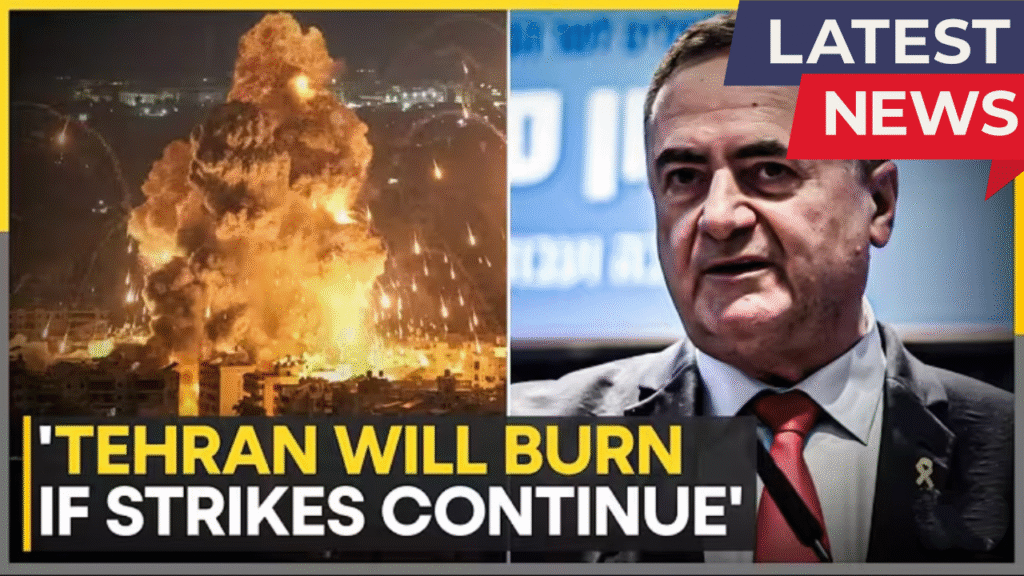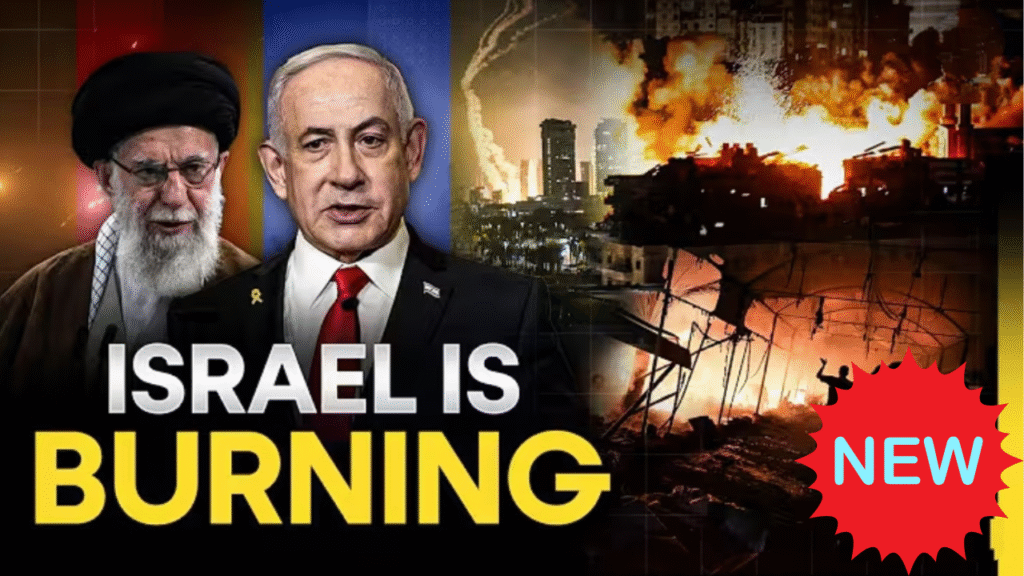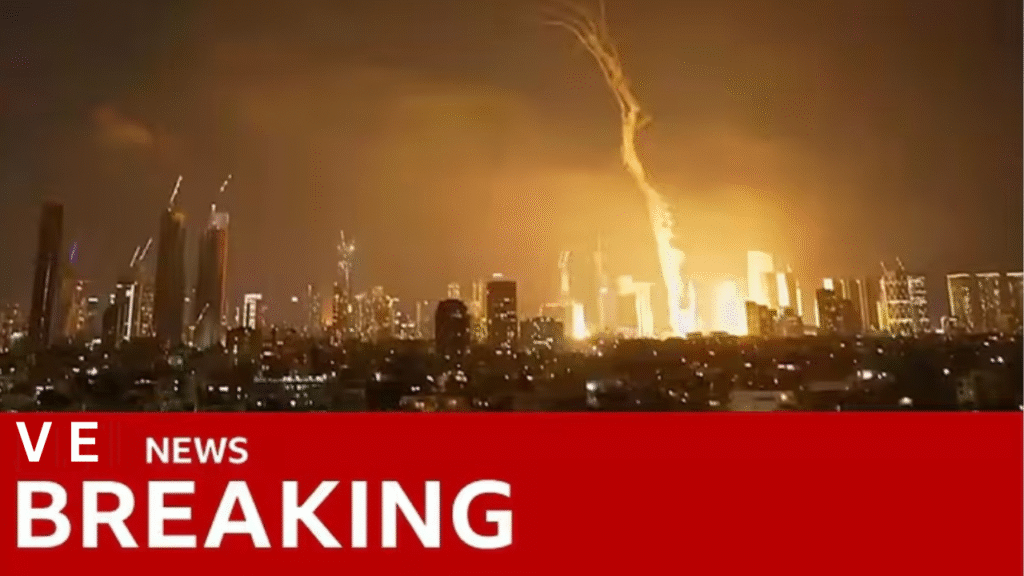Deep-seated tensions have long existed in the Middle East, and one of the most unstable is the complicated relationship between Israel and Iran. The Israel-Iran confrontation has reached previously unheard-of heights as of 2025, causing great alarm both locally and globally. This protracted struggle, now often known as the Israel-Iran war, has started to take on a more direct and lethal nature with worldwide implications, moving beyond a series of political declarations and proxy battles.

An Account of Tension
It is essential to look back in order to comprehend the present. Israel and Iran’s animosity did not start out that way. It has changed over the years due to political, ideological, and strategic disagreements. Iran has portrayed itself as an ardent opponent of Israel since the Iranian Revolution of 1979, rejecting its legitimacy and endorsing anti-Israel organizations such as Hamas in Gaza and Hezbollah in Lebanon. Israel, on the other hand, has seen Iran’s regional power and nuclear as existential dangers.
Through hacks, targeted killings, airstrikes against Iranian assets in Syria, and naval confrontations in the Persian Gulf, the tensions have frequently manifested themselves indirectly. However, there was a risky change in 2024, and in 2025, we are seeing the Israel-Iran battle move from a covert conflict to a direct conflict.
Why the Most Recent Escalation?
A sequence of events that quickly got out of hand led to the most recent battle. Citing fears of missile attacks, Israel staged a significant strike on Iranian military facilities in Syria at the end of 2024. Significant deaths and damage to infrastructure resulted from Iran’s volley of drone and missile strikes that were directed at Israeli territory in retaliation.
This was a watershed moment. Although both sides have always steered clear of open conflict in favor of minor skirmishes or proxies, it appears like the gloves are off now. Both nations had mobilized substantial military forces by the beginning of 2025. Israel declared a state of emergency and launched massive airstrikes over the Iranian border, while Iran’s Revolutionary Guard Corps stepped up its assistance for regional allied militias.

Actual Conditions on the Ground in 2025
The conflict between Israel and Iran has now spread beyond their respective boundaries. Yemen, Iraq, Syria, and Lebanon have all turned into war zones. Israel has responded to Hezbollah’s rocket launches into northern Israel with intense shelling. Israeli and American interests have been targeted by Iranian-backed militias in Iraq and Syria, to which Israel has responded with targeted airstrikes.Iran’s employment of sophisticated drone and missile technologies has been one of the most concerning developments. Previously symbolic, these attacks can now do actual harm. Direct strikes have caused civilian casualties and economic problems in Israeli cities like Haifa and Tel Aviv.Israel’s Arrow and Iron Dome missile defense systems have been overloaded in retaliation. Although they are generally successful, they are not infallible, and civilians who now constantly fear air strikes suffer greatly psychologically.
International Reaction and Wider War Risks
The world community is anxiously observing. Fearing that a wider regional conflict may attract more nations, such as Saudi Arabia, Turkey, and perhaps Russia, the United States has reiterated its support for Israel while also advising moderation. China has promised to arbitrate, but with little power over either side, while European countries are demanding a swift de-escalation.
The stability of the economy and the price of oil globally are also issues. The combat area is near the Strait of Hormuz, a vital conduit for international oil supplies. Any disturbance there might lead to a sharp increase in energy costs, which would set off a domino effect in already precarious international markets.
Another front in this struggle that is growing more and more significant is cyberwarfare. According to recent reports, crucial infrastructure on both sides—power grids, financial institutions, and media outlets—has been targeted. Israel and Iran both possess sophisticated cyber capabilities.
The Price in Human Life
The human cost goes beyond geopolitics and strategic calculations. Homes have been destroyed, thousands of citizens have been displaced, and people have died. In the midst of active combat zones, humanitarian organizations are finding it difficult to deliver aid, and hospitals in impacted areas are overburdened.
Life has become a daily battle of sirens and shelters for Israelis. The dread of air attacks and economic hardship is quite real for Iranians, particularly those living in border areas and in cities like Tehran and Isfahan. The tragic human stories serve as a reminder that peace should always come first, even though it’s easy to get caught up in the headlines.

What Happens Next?
Nobody knows for sure how the current Israel-Iran conflict will turn out. There is a chance that the situation could turn into a full-fledged regional conflict with several countries and disastrous outcomes. On the other hand, although trust is lacking, international pressure may compel both nations to engage in negotiations. There is no doubt that the situation requires immediate international attention. To prevent a disaster that would burn the Middle East—and even the entire world—diplomacy must be resurrected, back routes must be used, and regional countries must cooperate.
Concluding remarks
More than just a bilateral dispute, the Israel-Iran confrontation is now a litmus test for regional stability, international diplomacy, and the future of international conflict resolution. As the world looks on, there is hope for a lasting resolution that tackles the underlying roots of this decades-long hostility, not just for a truce.
The Middle East is still on edge for the time being. And everyone holds their breath.